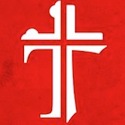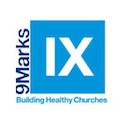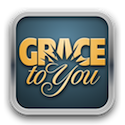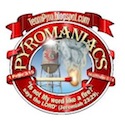About My Exegetical Process
 Once I have completed the diagram and the main idea of the text, I then go through each verse, studying each significant word and/or phrase. This could consist of tracing a word’s usage through the circles of context.[1] I note significant issues from verb tenses and syntactical structures. I generally consult one or two Scripture indexes from an original language grammar to see if they contribute anything significant to the verse or passage I am studying. I still consult notes I took in seminary language classes for syntactical issues.
Once I have completed the diagram and the main idea of the text, I then go through each verse, studying each significant word and/or phrase. This could consist of tracing a word’s usage through the circles of context.[1] I note significant issues from verb tenses and syntactical structures. I generally consult one or two Scripture indexes from an original language grammar to see if they contribute anything significant to the verse or passage I am studying. I still consult notes I took in seminary language classes for syntactical issues.
[begin unnecessary diatribe] To be honest, and in my opinion, the most helpful and necessary part of seminary is training in Hebrew and Greek. I believe any one who wants can read on his/her own from good theology texts and develop a basic systematic theology. However, one’s systematic theology will be quite limited without significant training in the details of exegesis. I don’t think most people (especially myself) can (or will) pick up the art and science of exegesis without formal and concentrated training.
I know by saying this I’m going to raise the ire of a few who preach well and accurately without formal seminary training or training in the biblical languages. I did the same for eight and a half years of pastoral ministry before seminary. Of course a person can preach and teach clearly and accurately without formal theological or exegetical training. However, the benefits far outweigh not having such training. I do believe one’s study skills will be limited without a solid education in the original languages.
By advocating seminary training I also don’t mean to sound as if I have mastered the languages or every nuance of exegesis. Seminary did not cause me to master the process. It merely provided me the tools and basic abilities to do good exegesis and to evaluate the exegesis presented in the commentaries and periodicles. I love reading about the subject of exegesis and continually shaping the details of my approach to the process. The training I had in seminary in the languages was priceless and crucial. [end unnecessary diatribe]
Back to the point of this post.
Most of my cross referencing or use of Bible dictionaries, lexicons, grammars, or an atlas is conducted at this stage[2] of my study. I try to do as much exegetical study on my own before consulting the commentaries. I want to evaluate the commentaries more than have them drive me.
Once I have finished my syntax and lexical study, I stack commentaries on my desk and begin to read through them one at a time on the passage I am studying. I tend to take numerous notes from seven to fifteen commentaries, depending on the length of the text and the amount of time I have to study. I arrange my commentaries from exegetical to devotional. I generally have one or two commentaries that are “must reads” for me and they tend to be some of the more technical commentaries. My reasoning is that the more technical commentaries will alert me to the primary places where significant disagreement of interpretation exists, or problematic passages that I need to make sure I have given careful consideration. [Need I say, my comprehension of what these technical commentaries are actually saying rose dramatically post seminary.] I read the more devotional commentaries looking for illustrations and applications. My goal is to translate, diagram and conduct grammatical and syntactical studies on Tuesday and Wednesday. I try to read commentaries on Thursday and perhaps on Saturday (I take Friday off).
By the end of this exegetical process, I hope to have a set of notes that will help me interpret the passage carefully and accurately.
[1] I mean by “circles of context,” tracing a word’s use in the sentence, the pericope, the chapter, the section, the book, the author, the genre, the Testament and possibly through the entire Bible.
[2] For syntactical studies, I use Greek Grammar Beyond the Basics by Daniel Wallace for Greek and An Introduction to Biblical Hebrew Syntax by Waltke and O’Connor for Hebrew. I have found Fredric Clarke Putnam’s A Cumulative Index to the Grammar and Syntax of Biblical Hebrew to be very helpful. This resource lists the places in major Hebrew grammars that deal with any text one may be looking at. For lexical studies I use BDAG, TDNT (normally little Kittle), NIDNT for Greek and TWOT and NIDOTTE for Hebrew. I may also consult a few other grammars and/or lexicons on the various software programs I use.







Your posts on Expository Preaching, are these going to be included in your project that you are working on? Or are they the project?
Actually, Jodi, they are from a paper I have written in the past and a class I taught last year to a few college students on how I go about the preaching process.
So, I’ll use this material in teaching students involved in the project.
Ahhh….thanks Bret. :o)